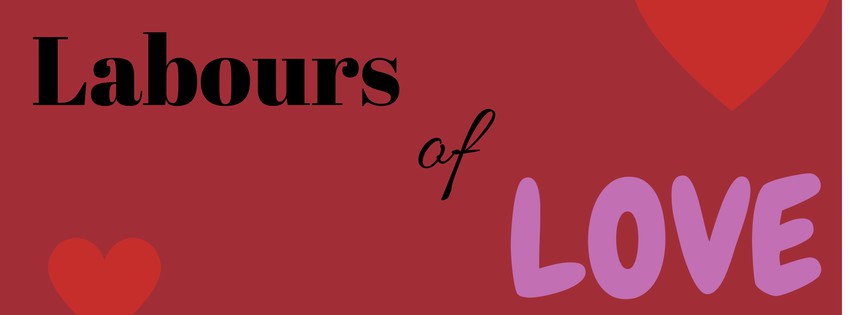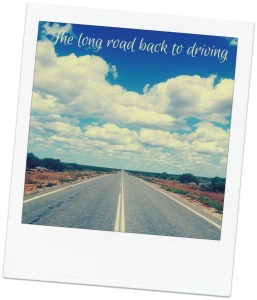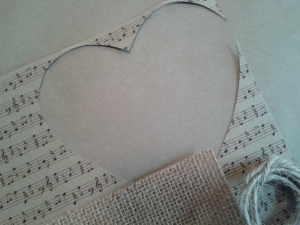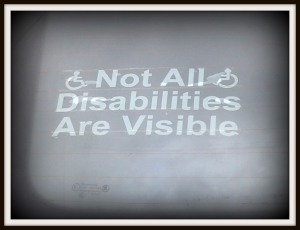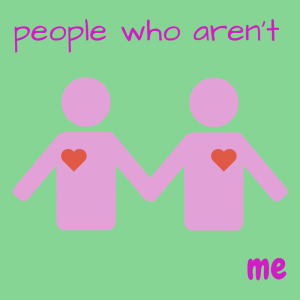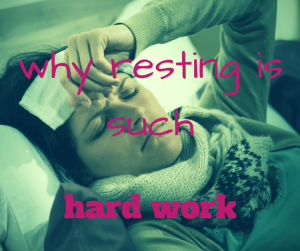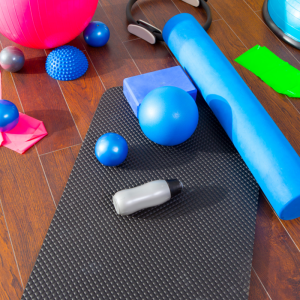
I’ve never been one for exercise. As a child, my ideal activity was sitting playing or reading and outdoor games were similarly sedentary – playing house, making mud pies etc. School P.E. lessons did nothing to convince me to change my mind, particularly the hysterical life-and-death approach to so-called team games. It also seemed that if you were not gifted at competitive sports you were not entitled to proper teaching; my 6th Form games lessons were spent working out to the same Jane Fonda exercise video circa 1982, which, although mildly amusing (I can still sing the theme song), was hardly quality Physical Education.
I now understand that it was perfectly natural for me to feel disinclined to exercise; Ehlers-Danlos Syndrome means that tissues are weak, joints unstable and proprioceptive ability poor. The nausea, headache and shortness of breath I experienced were not signs of my lack of fitness or anxiety at having to partake in activity I found un-enjoyable, but symptoms of my autonomic nervous system being unable to cope with the demands of it.
One activity I had always enjoyed though was walking. I walked surprisingly quickly and in fact was well-known amongst my colleagues for being able to walk from Plaistow to East Ham in just under 15 minutes! My husband and I would go out walking at the weekend – not rambling you understand, but wandering around London with our book of guided walks learning all sorts of tidbits and of course stopping for the odd drink.
In 2006, all that changed. Suddenly, the one form of exercise I could do and enjoyed became a painful and exhausting ordeal with the threat of collapse constantly hanging over me. I started to avoid walking as much as possible. My extremely painful left leg kept giving way underneath me so I stopped putting weight through it as I moved. I propped myself up with my equally painful but slightly more reliable right leg and dragged my left behind me, stooping because of the pain and weakness in my back. I could walk only very short distances and relied on my husband (and occasionally a friend) to push me in my wheelchair (my arms were too weak and painful to be able to self-propel). I gave up on exercise completely.
In 2010, I was referred to the three-week inpatient Pain Management and Rehabilitation Programme at the Royal National Orthopaedic Hospital. They made it clear from the start that it would be hard work and that exercise is an integral part of the programme. I was desperate for life to be better and I took a leap of faith with both feet, determining that I would do whatever was asked of me. Each day in the programme began with gentle stretching. Well, it was called “gentle” but, as anyone with chronic pain who is unaccustomed to exercise knows, that translates roughly as “bloody agony.” But it was a routine and it did get easier. We also had individual and sometimes paired sessions with the physiotherapists and I benefited particularly from gait-training with the use of a walking stick. After three days my parents came to visit me and I walked across the ward to greet them. My Dad didn’t recognise me at first – he’d got used to seeing me stooping and had forgotten my true height. By the time I was discharged, after three weeks, I knew that regular exercise had to be part of my routine and I worked diligently at my programme.
By 2012, I’d become very ill both physically and mentally. I was on long-term sick leave and applying for retirement on medical grounds. I was disillusioned with physiotherapy and in any case, I was too depressed to re-commit to exercise. We moved in with my parents and they persuaded me to visit a local, private physiotherapist named Claire Sanderson who has a really good reputation locally for her work with chronic pain. Claire was, I think, pretty horrified at how much pain I was in and that I had been told repeatedly by numerous health professionals that nothing could change it – I was simply on a quest to try and learn to live with it. Claire told me that she could help me to improve my pain. I was sceptical (yeah, right lady!) but willing to try anything, and she explained that she would spend half of our first appointment assessing my lower body and the other half treating me. Yep, she used the ‘t’ word: this physiotherapist was going to treat me. Not assess and then tell me to go and live with it, but actually treat my symptoms. She touched me. She felt my tissues and manipulated my joints. It was agony (by this stage even the sensation of my clothes against my skin was unbearably painful at times), but I felt the whole-body cramp I’d been in for years actually begin to dissipate in that very first session. And better than that, she taught me right away an exercise to help relieve my leg pain. An exercise I could use as “first aid” whenever the pain was particularly bad. I quickly found that the exercises Claire prescribed made me feel better. It was refreshing and deeply satisfying to be exercising to improve pain rather than because “I know it must be doing me good on some level.” I started to look forward to my appointments with Claire because I felt so much better afterwards. My posture started to improve and Claire suggested I join her weekly class for people with chronic pain based on Pilates. It felt like such a ‘normal’ thing to do – to go to an exercise class – but with the bonus of knowing that everyone else in the room was struggling just as much as I was. With the weekly class, and by carrying out the exercises at home, I have been able, gradually, to space out my individual appointments with Claire so that I now see her just once every six weeks for direct treatment. But I can also book in to see her for the acute problems which are common in Ehlers-Danlos Syndrome.
About a year ago, I started to feel that I wanted to get involved in some kind of cardiovascular exercise. I purchased a pedal-exerciser on Claire’s recommendation and sit happily in front of the TV, pedalling away. I enjoy the buzz of endorphins I get from it and a few months ago I decided I wanted a bit more of that. I realised I wanted to join another class but it felt so daunting. For a start I’d have to explain my medical situation, and risk not being believed or taken seriously, because I “look fine.” Then, I’d have to actually go to the class and work out with people who aren’t necessarily disabled, ill or in chronic pain. It was scary so I did nothing. Meanwhile I was getting more and more overweight.
Then, one day, a good friend mentioned a Legs, Bums and Tums class she’d been attending. She said it involved a fair bit of floor-work so I figured that, as long as I could get on and off the floor, I could probably have a go. I took a deep breath and called the number she’d given me for The Fitness Factory. Nicola answered right away. She was super-friendly and easy to talk to. I explained my situation and she said, “Why don’t you come along next week and watch? Have a go if you feel like it and see how you go. And if this class isn’t right for you then we’ll help you to find something that is, even if it’s with another company.” It was the best response I could have hoped for. I went along feeling remarkably confident. I introduced myself to Andrea – Nicola had already talked to her about me. Andrea told me just to go at my own pace and to ask for help if I needed it. And that’s just what I did. Three months on and I now attend two Fitness Factory classes a week (as well as Claire’s Pilates for People in Pain group). Andrea and Nicola have taught me alternatives to the exercises I just can’t do (I’ve had to experiment and find what works for me) and they do this without making a fuss; I’m just one of the group. I hear Claire’s voice in my head the whole time reminding me about my posture and alignment (her ubiquitous cry of “bo-ttom!” reminding me not to over-arch my back but tuck my tail under instead). It takes supreme concentration, it hurts and very often my movements bear little resemblance to those of everyone else in the room (!), but I’m doing it. I’m getting fitter and I’m losing weight. And I’m regaining control over my own body. Nothing feels better than that.
